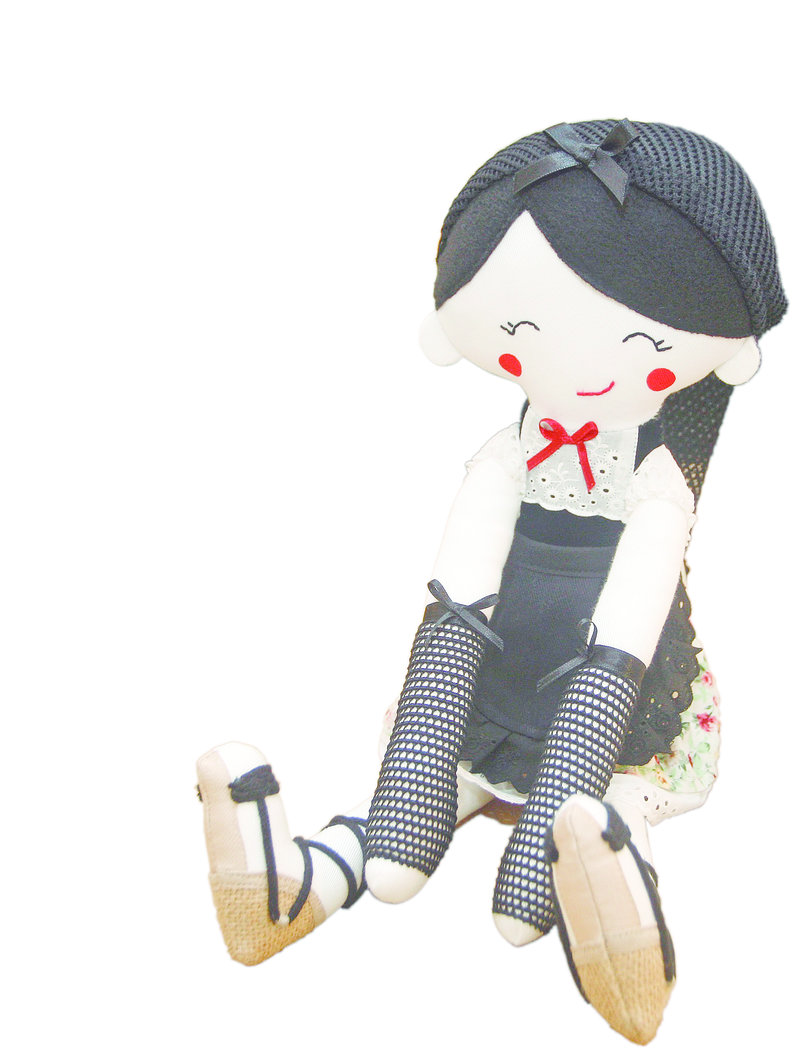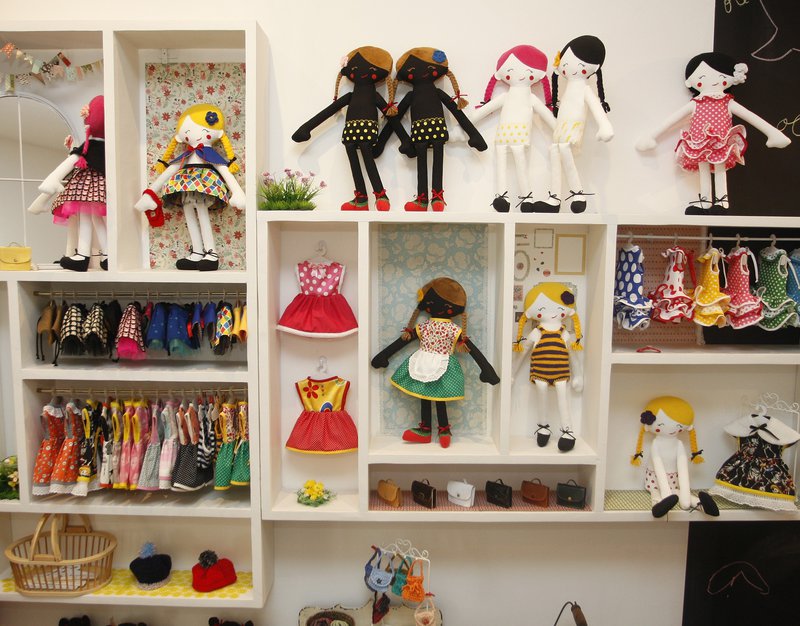Interview
A tribute to tradition for modern times
Galea's passion for sewing led her to open the shop Barcelonines, where she makes and sells the traditional Pubilla rag doll that she would like to see become an emblem for the city
How was the Pubilla born?
I researched it to see if something like that existed and I couldn't find anything anywhere. The pubilla used to be the eldest daughter in a family, and the first in line of succession unless there was another brother – known as the hereu. The pubilla is a popular figure in Catalan village festivals – usually a young, pretty and intelligent girl is chosen every year to represent the village – and she is supposed to provide an example for the rest of the young women. Depending on her clothes you can tell her standing: velvet, for example, indicated a high social level, but a simple cotton skirt meant she was a farm girl. The outfit used to be accompanied by the typical Mediterranean espadrilles [traditional canvas shoes]. which in Barcelona are called set vetes because they had seven ribbons. The outfit includes a white blouse, a black velvet brassiere, a flowery skirt, a petticoat and white tights. We are talking about the late 19th century, but the outfit has progressively become more modern and, depending on the region, there are variations, such as the skirt patterns.
Apart from the Pubilla you sell other products.
Little by little we have started making more products, such as a basic rag doll that little girls can dress in skirts and capes, and dresses, scarves and caps in winter. Obviously, I use a sewing machine but all details are hand-made: flowers, bags, the eyes, mouth, laces; they all have plaits, because this is how I remember the dolls I used to play with as a child. I also make Andalucinas and Morenitas, but my intention is for the Pubilla to be recognised as an original and authentic souvenir from Barcelona. We sell clothes for girls as well, more modern than those of the dolls but inspired by the Pubilla.
How did it all start? What came before the Pubilla?
I used to work in a children's clothes shop and one day the owner asked me to make a rag doll with the shop logo. I had it ready in three weeks. Then they started to sell it in the shop. I enjoyed it so much that I started to make more rag dolls, and then I had the idea of the Pubilla. We realised we had created a unique and different product and then we took the risk of opening a shop selling them.
What is your background?
I am a seamstress and dressmaker. I came from Venezuela 16 years ago but my in-laws are from the Basque country. After I graduated in fashion design, I worked in different places making children's and adult's clothes. My mum used to sew and I used to watch her work. One day I told her I wanted to make dresses for my dolls and so she gave me some scissors and a piece of cloth and we used to spend the afternoons together like that, and this is how the magic of this job started and I've been sewing for 17 years.
You created Barcelonines with your partner Stefano.
Stefano is fundamental for Barcelonines because we have been friends for 20 years. He is from Rome and has always been on my side, encouraging me. When the Pubilla came along, he said we needed to promote it, and the fact that we are so well-known online is thanks to him – we have a website, we are on Facebook, Pinterest, Twitter and we are number two on Tripadviser, out of 160 shops.
Is your Pubilla a homage to Catalan tradition?
Apart from the fact that I am grateful to this city for receiving me with open arms 16 years ago, it's my tribute to Catalan tradition – I want to highlight the Pubilla; she is important, not just at annual festivals, but I want to show girls that they can dress like her and make her more present in their lives.
Why is the Pubilla a different toy?
Aside from the symbology, they are healthy and natural toys. My aim is for parents to give their children the opportunity to play with tradition Catalan toys. It's not made of plastic; it's made here and it has a combination of factors that are quite important for the healthy development of little girls. There is an educational side to it, as these dolls help develop the imagination and they encourage girls to make dresses for their dolls. And who knows, maybe the hereu might come along as well soon?
Leave a comment
Sign in.
Sign in if you are already a verified reader.
I want to become verified reader.
To leave comments on the website you must be a verified reader.
Note: To leave comments on the website you must be a verified reader and accept the conditions of use.




